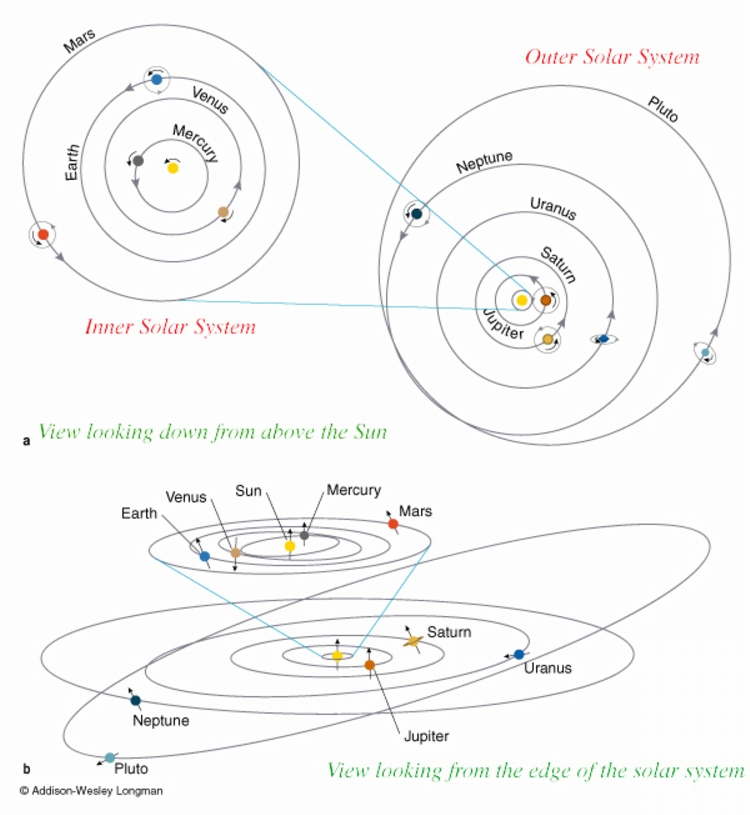
Image courtesy of NASA/ESA.
We can put a lot of the information we heard last time about solar activity into a single image to remind ourselves of the various aspects of the Sun that we discussed:

Image courtesy of NASA/ESA.
We have now learned about all of the contents of our solar system: the Sun, planets, and small bodies. We now know that these objects all formed out of the same cloud of dust and gas. Yet today, the objects seem so different from one another! By comparing these worlds to each other, we can learn more about the processes that caused each one to look as it does today. This approach is known as comparative planetology. Here is an analogy: you can learn more about a person by studying his or her family, friends, lifestyle, etc., than studying that person in great detail. We have completed our study of all the components of the solar system in some detail - now we will take a step back and look at the big picture.
Take a few minutes in your groups to describe (in general terms) the characteristics of our solar system. Imagine what you would see if you arrived here from an alien planet for a visit. Things you might want to consider include:
This is a good review exercise, but also, any theory that describes how the solar system formed must be able to describe our observations of our own system. It is the only solar system that we have been able to study (so far) in a lot of detail.
Everything you said (and more) can be lumped into 4 general features of our solar system that any formation theory must be able to explain:

| Terrestrial Planets | Jovian Planets |
| smaller mass, size | larger mass, size |
| rock, metal composition | light gases, hydrogen compounds |
| solid | no surface |
| closer to Sun (and closer together) | farther from Sun (and spaced farther apart) |
| warmer | cooler |
| few moons, no rings | many moons, rings |
| Asteroids | Comets |
| small rocky bodies | small icy bodies |
| mostly between orbits of Mars and Jupiter | two populations: Kuiper Belt and Oort Cloud |
| orbit in same direction as planets (CCW) | KB: orbit in same direction as planets |
| some have fairly elliptical orbits | OC: random orbits, not in plane of planets |
| probably 100,000 or more | millions or billions of them |
Any theory of solar system formation must be able to explain of the observations we've just described. There have been many theories put forward, but only one (so far) has been able to explain all of the general features of our solar system.
Our solar system formed out of a cloud of gas and dust. The solar nebula is the cloud from which the solar system formed. The following steps are believed to have occurred: